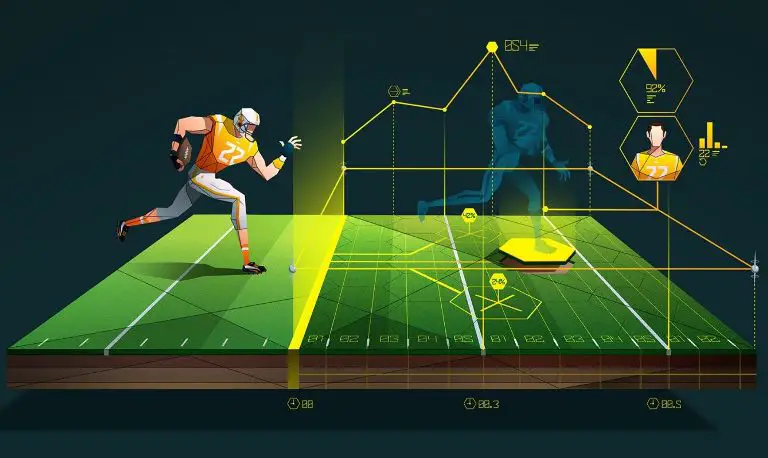
Technology's impact on professional sports has been both profound and transformative, reshaping various elements of the athletic landscape. From improving athlete performance to enhancing fan engagement, the integration of advanced technologies has fundamentally altered how sports are played, managed, and experienced.
Enhanced Athlete Performance

One of the key areas where technology has made significant strides is in the improvement of athlete performance. The use of wearable technology—such as fitness trackers and biometric sensors—has become commonplace. These devices enable athletes to monitor vital statistics like heart rate, caloric expenditure, and even sleep patterns, allowing coaches and athletes to fine-tune training regimens for maximum efficiency and injury prevention[2][8]. For instance, heart rate monitors help trainers assess the intensity of workouts and adjust them in real-time to optimize performance without risking overtraining[8].
Artificial Intelligence (AI) plays a crucial role in this optimization process as well. AI algorithms can analyze the data collected from wearables to identify injury risks and suggest personalized training programs that adapt to an athlete's changing physical condition[8]. The integration of AI in video analysis allows teams to dissect gameplay footage meticulously, uncovering tactical insights that inform strategy and skills improvement for individual players[8].
Revolutionized Game Experience and Officiating
Technological advancements have also transformed the game experience for athletes and spectators alike. Innovations such as goal-line technology and the Video Assistant Referee (VAR) system allow for more accurate officiating, minimizing human error during critical moments in games[2][3]. Such systems ensure that decisions made during matches are substantiated with technological validation, thereby fostering fairness and integrity in sports.
Similarly, technologies like Hawk-eye are utilized in various sports to track the trajectory of balls and confirm whether they are in or out, enhancing the accuracy of officiating[1][3]. These advancements have revolutionized how disputes are settled in professional matches, significantly impacting gameplay and outcomes.
Advanced Analytics for Strategic Insights

The rise of big data and data analytics in sports has transformed how teams evaluate athlete performance and develop strategies. Teams employ data analytics to assess not just player statistics but also the effectiveness of game strategies against specific opponents[5][7]. This approach allows coaches and management to make informed decisions on player recruitment and training, effectively improving team dynamics and competitiveness. Through real-time performance metrics, teams can adjust strategies during games for immediate feedback and adaptation[7].
Beyond player performance, the commercial side of sports has also benefited greatly from analytics. Teams gather extensive data on fan behavior and engagement, which helps tailor marketing and sponsorship strategies, leading to more lucrative partnerships[7] and enhanced fan experiences.
Improved Fan Engagement and Experience
In terms of fan experience, technology has redefined how audiences interact with sports. The integration of augmented reality (AR) and virtual reality (VR) has created immersive experiences that allow fans to engage with games in groundbreaking ways. Fans can use AR to view real-time stats and player information, transforming traditional viewing into an interactive event[2][9].
Moreover, VR technology enables fans to experience games from the player’s perspective, providing a unique vantage point that deepens their connection to the sport[8]. Smart stadium features with high-speed Wi-Fi, mobile apps, and interactive screens enhance in-person attendance, making live games more enjoyable and convenient[7][9].
As spectators increasingly demand personalized experiences, the adoption of technology in stadiums continues to rise, with fans able to order food, access instant replays, and manage their game day experience through mobile devices[7].
Ethical Considerations and Future Trends
While the benefits of technological advancements in sports are abundant, ethical considerations surrounding data privacy and performance enhancement have emerged. The monitoring of athletes' biometric data raises concerns regarding consent and the potential misuse of such information[7][9]. Furthermore, performance-enhancing technologies pose moral dilemmas in terms of what constitutes fair competition[6][7].
Looking ahead, the growth of AI, wearable technology, and the Internet of Things (IoT) is expected to continue shaping the sports landscape. As teams and organizations embrace these innovations, strategic investments in technology are predicted to enhance both athlete performance and the overall game experience. The intersection of sports with digital capabilities will likely lead to further customization of experiences, allowing organizations to attract new demographics and adapt to changing consumer preferences[4][9].
Conclusion
In summary, the infusion of technology into professional sports has redefined various aspects of the industry, from athlete training and performance analysis to fan engagement and officiating. As technological capabilities evolve, the relationship between sports and technology will undoubtedly deepen, presenting new opportunities and challenges for stakeholders across the global sports landscape. In navigating this dynamic terrain, organizations must remain vigilant regarding ethical considerations while embracing the innovations that will continue to drive the future of sports.
Get more accurate answers with Super Pandi, upload files, personalized discovery feed, save searches and contribute to the PandiPedia.
Let's look at alternatives:
- Modify the query.
- Start a new thread.
- Remove sources (if manually added).